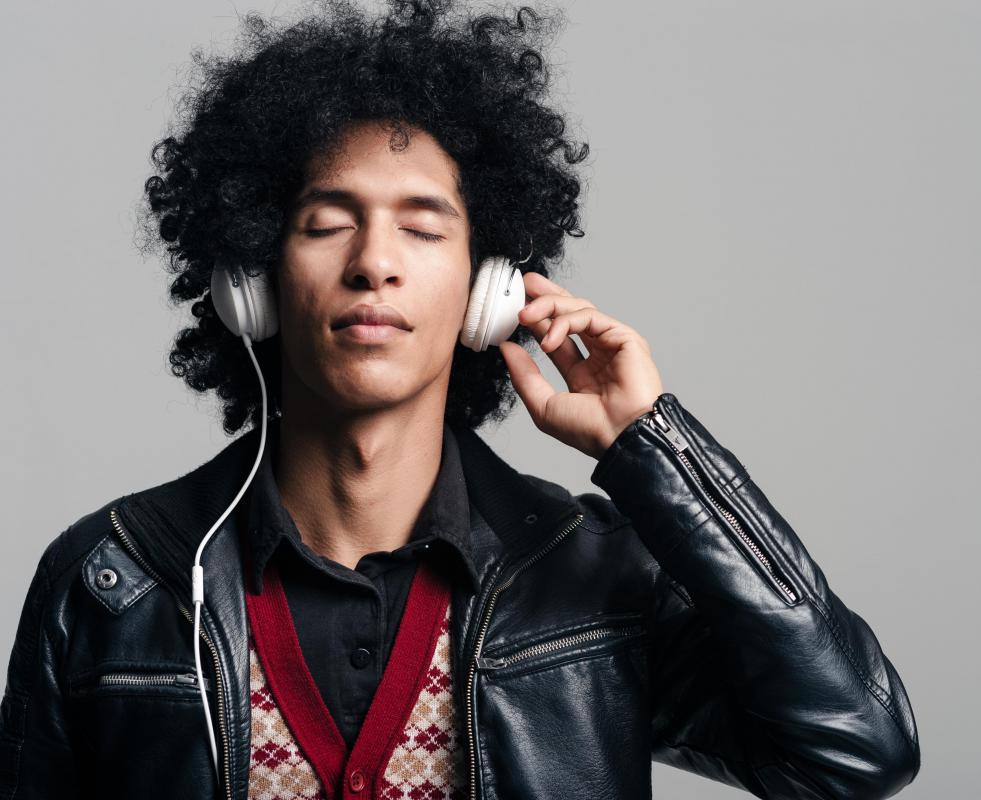At WiseGEEK, we're committed to delivering accurate, trustworthy information. Our expert-authored content is rigorously fact-checked and sourced from credible authorities. Discover how we uphold the highest standards in providing you with reliable knowledge.
How Do I Choose the Best Recording Headphones?
The best way to get quality recording headphones is to do thorough research. Understanding what you need out of a set of headphones is a solid first step toward getting the best ones for your recording purposes. Read recording technology magazines to find out what the cutting-edge technology has to offer. With the high-end features you want most in mind, research the headphones within your price range to determine the best value for your money. Ensuring that fundamental features like a balanced connector and a standard frequency response range can help ensure that you get a responsive pair of headphones.
In audio, the weakest link in the system is the highest level at which a system performs. This means that you can have the best audio console, recording software and speakers, but if you are using inferior recording headphones, you will still only hear the best sound the headphones can put out and not the sound quality from the high end equipment. Research the types of headphones used by your favorite musicians and recording professionals and figure out which headphones and features fit into your price range. Generally, you will find that recording headphones are full coverage, meaning they fit entirely over the ear to seal out external sound. Other types of headphones like in-ear and open headphones are not usually used for professional recording.

Another important specification on headphones is the frequency range. Look for a pair of headphones with a minimum frequency range of 20 to 20,000 hertz (Hz). You can find the frequency range by looking at the product specifications on the product packaging or on the website for the company that makes the recording headphones.
The type of connectors on a pair of headphones can also influence your sound. Look for balanced connectors to reduce the chance of experiencing hissing and interference in your recording headphones. Balanced audio connectors have one more conductor than unbalanced headphones. The easiest way to tell whether a pair of headphones has balanced connectors is to look at the plug that connects to the recording console or output device. If the plug is divided into three segments by two black rings, instead of two segments by one black ring, then you most likely have a balanced connector.

Though it may seem like a needlessly extravagant feature, gold-plated plugs can help ensure that your headphones conduct sound well. Using highly conductive metals like gold in audio equipment can help improve sound quality. Not all gold-colored connectors are actual gold, so you need to look at the headphone specifications to determine whether the headphone connector is real gold.
AS FEATURED ON:
AS FEATURED ON:













Discussion Comments
@Vincenzo -- True, but what about people who do have high end audio equipment? Will using inexpensive headphones and speakers in the studio and tailoring sound to meet the requirements of that somewhat common equipment produce a recording that sounds great in expensive equipment?
Probably not.
It would seem, then, that it is important to use high end stuff when producing albums but testing things on less expensive equipment before the final mix. In theory, that should embrace the best of both worlds and result in a recording that sounds great on equipment used by just about any consumer.
But there is a place for inexpensive headphones in a recording studio. Those high-end headphones and speakers that are common to recording studios do sound great, but do they really have much to do with how people will actually hear music?
Most people will be listening to music over inexpensive headphones and speakers. Using those items in a recording studio to test a recording, then, will yield a fairly accurate depiction of how that music will actually sound to consumers. That information can be valuable.
Post your comments